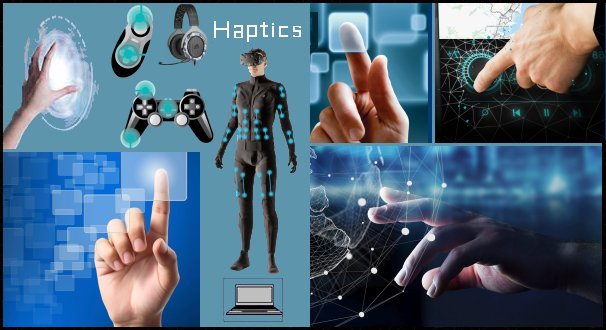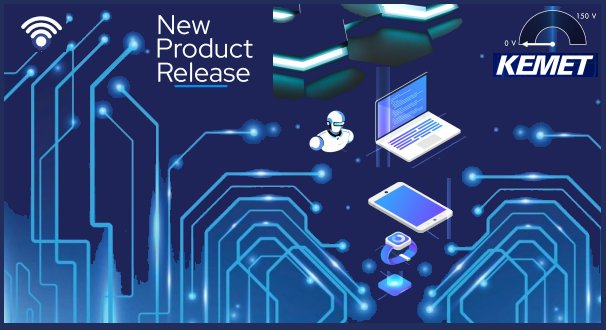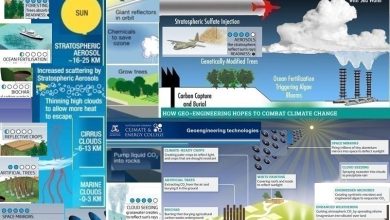
In 1973, Thomas D. Shannon received the first patent for a tactile telephone and in 1975 A. Michael Noll of Bell Telephone Laboratories received a patent for a tactile communications device. Since then, there has been a rapid demand in video games, mobiles, robots, consumer electronic devices, touch-enabled home appliances, and the adoption of haptic technology in the automotive, industrial, and medical divisions. Established in 2020, Haptics Industry Forum (HIF) is an industry group devoted to the development of haptic content and the haptic ecosystem. Immersion (NASDAQ: IMMR) is a global developer and licensor of haptic feedback technology. Nanoport Technology (in Toronto, Canada) is a Research and Development Laboratory for mobile technologies in connectivity, haptics and multi-device applications. Nanoport launched a company, TITAN Haptics, as a step towards creating virtual buttons with touch feedback for smartphones. TITAN Haptics pioneered a revolutionary haptic actuator technology known as Linear Magnetic Ram (LMR). The LMR actuator (motor) embodies high-definition haptic feedback that enables advanced experiences in augmented reality, gaming, music, virtual buttons on smartphones, and other innovative future products. Wearable Original Equipment Manufacturers (OEMs) and mobile phones are presented with Immersion haptic licenses (due to a contract between Immersion and TITAN Haptics). Still in its infancy, haptic technology and feedback will be more remarkable than any other technological breakthrough in history!
The human five senses are touch, hearing, sight, taste (flavour) and smell. The sense of touch is unique among the senses! Active touch refers to the action of touching. When holding an object, normal forces are applied to the grip surface in reaction to differences in forces sensed at skin level. Passive touch describes stimulation of the skin by an outside force. F. A. Geldard believed that the sense of touch was a neglected sense of communication. In 1957, he developed a theory (known as Vibratese) which he based on the human sense of touch. The entire English alphabet as well as the numerals zero to nine could be communicated with this tactile language. Geldard cited that reading rates of more than thirty-five words per minute could be achieved with training; rates three times that of an expert with Morse code. Another tactile language is that of Louis Braille (the founder of the Braille method of reading for the blind). Louis had been totally blind since the age of three; at the age of ten, he received a French scholarship and became the youngest student at the Royal Institute for Blind Youth (the world’s first school for blind children). At fifteen, he developed the Braille tactile language (a system of reading and writing using the fingertips to feel the patterns of raised dots on the paper). Two years later he adapted this method to musical notation. At nineteen, he accepted a full-time teaching position at the Institute. He died at the age of forty three as a teacher and musician of the blind. A biography ‘A New Method: The Story of Louis Braille’ was published by the Louis Braille Centre, the forerunner of today’s Louis Braille School.
The senses are related topics studied by fields such as cognitive science, neuroscience and philosophy of perception. In humans, most researchers describe three sensory systems related to the sense of touch; cutaneous, kinaesthetic and haptic. As haptic feedback is already an extensive field which includes haptic technology, haptic feedback, as well as the physiology and neuroscience of touch, it only adds to the complexity of the theory. As visually-oriented people, we don’t stop to think how incredible the sense of touch is; touch can be described as kinaesthetic communication or three-dimensional touch. Because there are more or less one hundred neural touch receptors in each fingertip, the fingertips are ultra sensitive! Due to the touch sensation originating in the dermis (the bottom layer of the skin) the sense of touch is all over the body! The dermis is filled with countless nerve endings that send the feeling of touch to the brain via the spinal cord. Haptic Feedback uses touch as a feedback system (a method of transmitting and understanding information). Any concept that simulates the sensation of touch can be categorised under haptics – from simple button depressions to force sensors and actuators that simulate resistance, shape, tension, texture, and weight. Haptic senses connect to the touch sensation area in the brain as well as the movements of the body via sensory nerves in the body’s muscles and joints; the reason why the touch of virtual objects seem real and tangible! Although Geldard’s Vibratese theory and Louis Braille’s raised dot tactile language is classified as haptic technology, these tactile communication systems are only accessible to a specific section of the population. There is enormous latent possibility for modern practical artificial tactile communication methods that will appeal to everyone. Geldard himself quoted that ‘coding to letters and numerals is really a pedestrian way of getting meaning into tactile patterns’ which suggests that the design of an artificial tactile language should be inspired by the rich tactile interactions that we experience (on a daily basis) with the world and our immediate surroundings. From the time the skin is stimulated complex cognitive and perceptual phenomena is set into motion. Psychological aspects such as attention and emotion react to the sensation of touch. Different mechanical stimulations such as to compress, indent, stretch, tap, or vibrate the skin forms a variation-basis for skin interactions.
Haptic technology is a new method of learning in which we can convey and understand any kind of data and information through touch. Haptic feedback is the technology of adding touch (tactile) sensation to human interaction with computers. It is the mechanical stimulation to create virtual objects (which exist only in a computer simulation); when virtual objects are touched, they seem real and tangible. Overall, haptic feedback is to add devices, science, and technology to the gathering of information, touch stimulation, and object manipulation (through tactile sensations); thereby enhancing the experience of the user. Teleoperation (physical interaction to create and control virtual objects in a computer simulation) is performed from a distance; the virtual environment is achieved by a computer-based program. In a telerobotic system, the movements of a robot are controlled by a human operator (a distance away from the robot). Although some teleoperated robots are limited to simple tasks such as pointing a camera and transmitting visual images to the controller, telerobotic functions (the remote control of machines and devices) have drastically improved. Being able to create haptic virtual objects has made it possible to explore how the human sense of touch functions. The emerging technology of combining touch and vision requires the addition of the touch sensation to augmented and virtual reality. The ‘feeling’ of touch is simulated with various devices that apply forces, vibrations, motions, and even ultrasound beams (any technology that can create the sensation of touch) to enable the user to interface via ‘touch’ with a virtual environment. It enables realistic digital touch feedback across automotive, gaming, mobile, wearables, and other consumer experiences. Haptics is in high demand for gaming consoles such as Xbox, PlayStation, and others.
By adding sound, the use of haptics in game controllers, joysticks, steering wheels, and video games improves the overall experience. Automotive haptic technology uses touch control to assist with vehicle functions, athletes wear full body suits equipped with hundreds of small IoT sensors to evaluate every move they make. Haptic devices (human-computer interactive interfaces) integrate microcontrollers, drivers, sensors, actuators, as well as software for multi-modal experiences that improve the usability by engaging touch, sound and sight. Haptic interfaces allow the user to feel and see virtual objects on a computer which creates the illusion of touching surfaces. The technology involves virtual and mixed reality solutions that provide multi-purpose experiences through sight, sound, and touch. It offers users accurate immersive experiences when using touch screen interfaces and makes video games seem more real. Haptic actuators are next-generation technology. KEMET Corporation (NYSE: KEM)’s haptic actuators are made from a patent-protected paper-thin material (an electro-active polymer film that enables piezoelectric effects to imitate the sense of touch). The flexible piezoelectric film technology adds localised body sensations and tactile effects to various applications such as gaming controllers, virtual and augmented reality, sports training, and any other product that has human-computer interaction. In addition to audio and visual awareness, VR Haptics technology offers an added dimension to the virtual reality environment by allowing users to feel the virtual world through the sense of touch, offering them the actual experience of being immersive in the artificial world. Haptic VR gloves enable the wearer to reach out and ‘touch’ the virtual reality experience through simulated feeling. Novasentis is transforming the haptic technology market in augmented and virtual reality, gaming controllers, and smart watches. Nintendo does not associate with the technology as haptic feedback, but instead uses the terminology Rumble HD. D-BOX redefines entertainment experiences with explicit immersive haptic technology that supports the entire body with feedback and improves the imaginative experience through motion. The Haptic Cuff was pioneered as a 5G-enabled device (to be worn on the wrist) complete with advanced haptic technology such as highly-reliable vibrational actuators, thermal components, and a squeeze actuator. The new Surface Slim Pen Two features new haptic and zero-force inking features which makes writing or drawing on a screen feel like real paper.
Looking beyond augmented and virtual reality, consoles, and video games, on an educational level it is important to advance applications to assist with training the next generation of surgeons and to improve simulations in the industrial sector for large machine operators and pilots. Researchers at Johns Hopkins and Drexel Universities believe that adding the artificial sense of touch (haptics) to upper limb prostheses will reduce the mental effort to manage a prosthetic limb and improve it to function similar to a healthy limb (bringing science closer to the development of prosthetic technology). The global totally blind population is more or less between forty and forty-five million people and almost another one-hundred-and-thirty-five million people are deemed to have poor vision. Fauxsee Innovations received funding from the National Institute on Deafness and Other Communication (part of the National Institutes of Health) as a one-year Small Business Innovation Research award to develop and test an advanced haptic technology that will allow the deaf to understand speech; Fauxsee developed RoboHear™. Their previous NIH Small Business Technology Transfer award from the National Eye Institute was to develop and test the Roboglasses product. Roboglasses alert the visually impaired of obstructions in the path of the upper body that cannot be detected by a guide dog or a walking cane). The ‘BrailleBand’ is a user friendly wearable band (haptic device) that enables communication using the Braille language. It consists of six nodes in three bands that represent the Braille alphabet. Connectivity between the BrailleBand and the mobile phone (smart device) is activated via Bluetooth to give the sense of touch to each character of the Braille alphabet. Three mobile applications such as short message service (SMS) and navigation were custom developed to train the visually impaired and incorporated into the BrailleBand. Gone are the traditional tactile methods of Vibratese and Braille!













